
Earl of Erroll is a title in the Peerage of Scotland. It was created in 1453 for Sir William Hay. The subsidiary titles held by the Earl of Erroll are Lord Hay and Lord Slains (1452), both in the Peerage of Scotland. The Earls of Erroll also hold the hereditary office of Lord High Constable of Scotland. The office was once associated with great power. The Earls of Erroll hold the hereditary title of Chief of Clan Hay.

Earl of Kinnoull is a title in the Peerage of Scotland. It was created in 1633 for George Hay, 1st Viscount of Dupplin. Other associated titles are: Viscount Dupplin and Lord Hay of Kinfauns (1627) and Baron Hay of Pedwardine (1711). The former two are in the Peerage of Scotland, while the third is in the Peerage of Great Britain. The title of Viscount Dupplin is the courtesy title for the Earl's eldest son and heir.

The Lord High Constable is a hereditary, now ceremonial, office of Scotland. In the order of precedence of Scotland, the office traditionally ranks above all titles except those of the royal family. The Lord High Constable was, after the King of Scots, the supreme officer of the Scottish army. He also performed judicial functions as the chief judge of the High Court of Constabulary. From the late 13th Century the Court – presided over by the Lord High Constable or his deputies – was empowered to judge all cases of rioting, disorder, bloodshed and murder if such crimes occurred within four miles of the King, the King's Council, or the Parliament of Scotland. Following James VI's move to England, the jurisdiction of the Lord High Constable was defined in terms of the "resident place" appointed for the Council.

Clan Hay is a Scottish clan of the Grampian region of Scotland that has played an important part in the history and politics of the country. Members of the clan are to be found in most parts of Scotland and in many other parts of the world. However, the North East of Scotland, i.e. Aberdeenshire (historic), Banffshire, Morayshire and Nairnshire Nairn (boundaries), is the heart of Hay country with other significant concentrations of Hays being found in Perthshire, especially around Perth, in the Scottish Borders, and in Shetland.
Donnchad II, anglicized as Duncan II or Dunecan II, succeeded his father Duncan I as Earl of Fife in childhood. As a child of the previous mormaer, he was entitled to succeed his father through primogeniture, but not to lead his kin-group, Clann MacDuib. That probably fell to his cousin, Aed mac Gille Míchéil. Like previous mormaers of Fife, Duncan II was appointed Justiciar of Scotia. Donnchad's minority also meant that Ferchar, Mormaer of Strathearn, took supreme place as head of the Gaelic nobility and guide for the boy-king Malcolm IV.
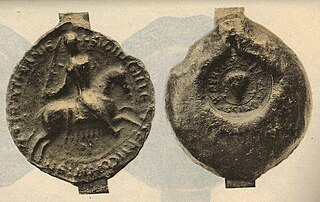
Gille Brigte of Strathearn (1150–1223), sometimes also called Gilbert, was the 3rd Earl or Mormaer of Strathearn.
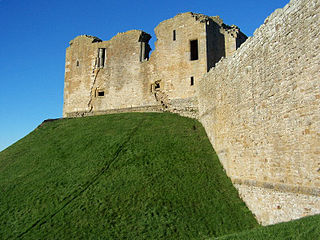
Freskin was a Flemish nobleman who settled in Scotland during the reign of King David I, becoming the progenitor of the Murray and Sutherland families, and possibly others.
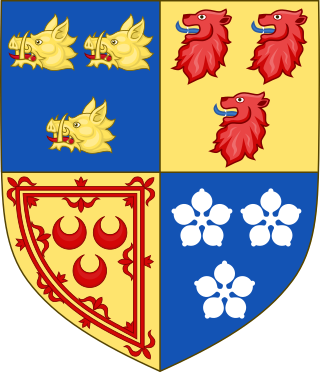
Alexander Seton, 1st Earl of Huntly, who adopted the family name of Gordon from about 1457, was a powerful 15th-century Scottish magnate. He was knighted in 1439/1440 and was Lord of Badenoch, Gordon, Strathbogie and Cluny.

Sir Gilbert de la Hay, fifth feudal baron of Errol in Gowrie, was Lord High Constable of Scotland from 1309.
Ranulf de Soules was a Norman knight who came to Scotland with David I and served as his cupbearer.
Simon is the third known 12th century Bishop of Dunblane. Nothing is known of Simon's background as there are numerous Simons in Scotland in this period, both native and foreign. There is a Symon de Liberatione who witnessed a charter of King William the Lion and whom Watt and Murray suggested may have been the later Bishop of Dunblane, while there was in the same decade a local landholder and ecclesiastical patron in the diocese of Dunblane called Simón son of Mac Bethad.
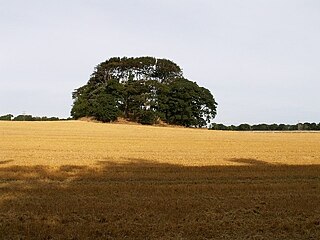
Pitmilly is the site of a former estate located five miles south-east of St Andrews, Scotland. Its historical significance is threefold. It has been inhabited from ancient times; artifacts continue to be recovered from the Neolithic, Bronze and Iron Ages and a well-known barrow Tumulus from the Bronze Age still exists there. It is connected to Clan Hay in that Eva of Pitmilly, the Celtic heiress to these lands, married William II de Haya, a Norman, in the 12th century C.E., with the couple becoming the progenitors of that Scottish clan. Finally, for over seven centuries, it was owned by the important Monypenny family.

Elizabeth Hay, Countess of Erroll was an illegitimate daughter of King William IV of the United Kingdom and Dorothea Jordan. She married William Hay, 18th Earl of Erroll, and became Countess of Erroll on 4 December 1820 at age 19. Due to Hay's parentage, William Hay became Lord Steward of the Household. Elizabeth and William Hay married at St George's, Hanover Square. Hay is pictured in a FitzClarence family portrait in House of Dun, and kept a stone thrown at her father William IV and the gloves he wore on opening his first Parliament as mementos.
The office of Butler of Scotland, was a court position in the Kingdom of Scotland during the High Middle Ages.

William Hay, 1st Earl of Erroll was a Scottish peer. He was the first Earl of Erroll and the second Lord Hay of Erroll.

Nicholas Hay, 2nd Earl of Erroll was a Scottish peer. He was the second Earl of Erroll and the third Lord Hay of Erroll.

William Hay, 3rd Earl of ErrollPC was a Scottish peer. He was the third Earl of Erroll and the fourth Lord Hay of Erroll.

Andrew Hay, 8th Earl of Erroll was a Scottish nobleman and politician.

William Hay, 10th Earl of Erroll PC was a Scottish nobleman.
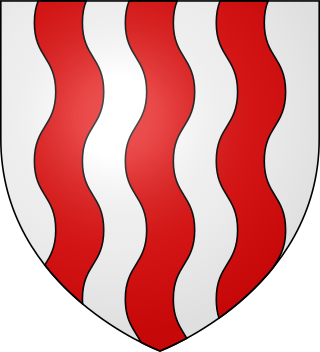
de Valognes is a family name of two distinct powerful families with notable descendants in the centuries immediately following the Norman Conquest. Although a connection between them has been inferred by some authorities, this is not supported by positive evidence.